This article includes a list of general references, but it lacks sufficient corresponding inline citations .(November 2018) |
Henry VII of England has been depicted a number of times in popular culture.
Contents
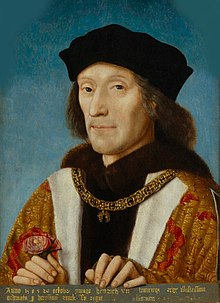
This article includes a list of general references, but it lacks sufficient corresponding inline citations .(November 2018) |
Henry VII of England has been depicted a number of times in popular culture.

As a youthful Earl of Richmond, Henry is a character in the play Henry VI, Part 3 by William Shakespeare. He is also a character in Shakespeare's play Richard III .
The Founding, Volume 1 of The Morland Dynasty , a series of historical novels by author Cynthia Harrod-Eagles, is set against the background of the Wars of the Roses. Towards the end of the novel a fictional account is given of Henry winning his crown through the Battle of Bosworth, and of the events leading up to this battle.
He is the hero of the historical novel An Unknown Welshman (1972) by Jean Stubbs.
In the celebrated fantasy novel The Dragon Waiting by John M. Ford, Henry is killed at the Battle of Bosworth, thus preventing the House of Tudor from ruling England.
Henry appears in four novels by Philippa Gregory: The Red Queen (2010), which centers on the life of his mother Margaret Beaufort and her ambition to get him on the throne; The White Princess (2013), which centers on his wife, Elizabeth of York; The White Queen (2009), which centers on the life of his mother-in-law, Elizabeth Woodville; and a brief appearance in The Constant Princess (2005).
Henry has been portrayed by the following actors on film, mostly in versions of the Shakespeare play:
Henry has been portrayed on television by:
Video Game
Sue Parrill and William B. Robison, The Tudors on Film and Television (McFarland, 2013). ISBN 978-0786458912.
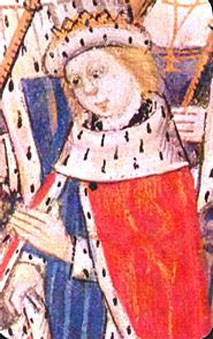
Edward V was King of England from 9 April to 25 June 1483. He succeeded his father, Edward IV, upon the latter's death. Edward V was never crowned, and his brief reign was dominated by the influence of his uncle and Lord Protector, the Duke of Gloucester, who deposed him to reign as King Richard III; this was confirmed by the Titulus Regius, an Act of Parliament which denounced any further claims through Edward IV's heirs by delegitimising Edward V and all of his siblings. This was later repealed by Henry VII, who wished to legitimise his reign by marrying Elizabeth of York, Edward V's eldest sister.

Elizabeth Woodville, later known as Dame Elizabeth Grey, was Queen of England from 1 May 1464 until 3 October 1470 and from 11 April 1471 until 9 April 1483 as the wife of King Edward IV. She was a key figure in the Wars of the Roses, a dynastic civil war between the Lancastrian and the Yorkist factions between 1455 and 1487.

The Princes in the Tower refers to the mystery of the fate of the deposed King Edward V of England and his younger brother Prince Richard of Shrewsbury, Duke of York, heirs to the throne of King Edward IV of England. The brothers were the only sons of the king by his queen, Elizabeth Woodville, living at the time of their father's death in 1483. Aged 12 and 9 years old, respectively, they were lodged in the Tower of London by their paternal uncle and England's regent, Richard, Duke of Gloucester, supposedly in preparation for Edward V's forthcoming coronation. Before the young king could be crowned, however, he and his brother were declared illegitimate. Gloucester ascended the throne as Richard III.

Cecily Neville was an English noblewoman, the wife of Richard, Duke of York (1411–1460), and the mother of two kings of England—Edward IV and Richard III. Cecily Neville was known as "the Rose of Raby", because she was born at Raby Castle in Durham, and "Proud Cis", because of her pride and a temper that went with it, although she was also known for her piety. She herself signed her name "Cecylle".

Richard III is a play by William Shakespeare. It was probably written c. 1592–1594. It is labelled a history in the First Folio, and is usually considered one, but it is sometimes called a tragedy, as in the quarto edition. Richard III concludes Shakespeare's first tetralogy and depicts the Machiavellian rise to power and subsequent short reign of King Richard III of England.

Philippa Gregory is an English historical novelist who has been publishing since 1987. The best known of her works is The Other Boleyn Girl (2001), which in 2002 won the Romantic Novel of the Year Award from the Romantic Novelists' Association and has been adapted into two films.
Clive Merrison is a British actor of film, television, stage and radio. He trained at Rose Bruford College. He is best known for his long running BBC Radio portrayal of Sherlock Holmes, having played the part in all 64 episodes of the 1989–1998 series of Sherlock Holmes dramatisations, and all 16 episodes of The Further Adventures of Sherlock Holmes (2002–2010).
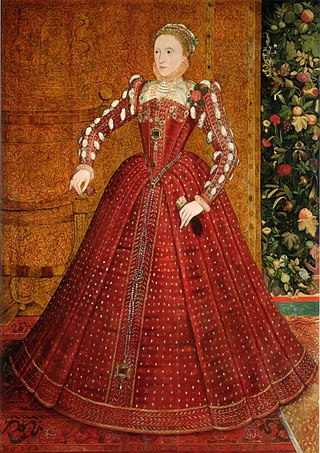
Elizabeth I of England has inspired artistic and cultural works for over four centuries. The following lists cover various media, enduring works of high art, and recent representations in popular culture, film and fiction. The entries represent portrayals that a reader has a reasonable chance of encountering rather than a complete catalogue.

Richard III of England has been depicted in literature and popular culture many times. In the Tudor period he was invariably portrayed as a villain, most famously in Shakespeare's play Richard III, but also in other literature of the period. Richard's life was not much depicted again until the 20th century when the "Ricardian" movement sought to restore his reputation. Much of more recent creative literature has portrayed him in a positive light. However his reputation as a hunchbacked villain has remained a familiar historical cliché within popular culture.

Henry VIII and his reign have frequently been depicted in art, film, literature, music, opera, plays, and television.
Edward IV of England has been depicted in popular culture a number of times.

Mary I of England has been depicted in popular culture a number of times.

The White Queen is a 2009 historical novel by Philippa Gregory, the first of her series The Cousins' War. It tells the story of Elizabeth Woodville, queen consort of King Edward IV of England. The 2013 BBC One television series The White Queen is a 10-part adaptation of Gregory's novels The White Queen, The Red Queen (2010) and The Kingmaker's Daughter (2012), and features Rebecca Ferguson as Elizabeth Woodville.
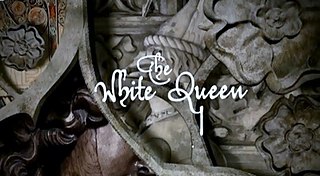
The White Queen is a British historical drama television drama serial based on Philippa Gregory's historical novel series The Cousins' War. The first episode premiered on BBC One on 16 June 2013 in the UK.
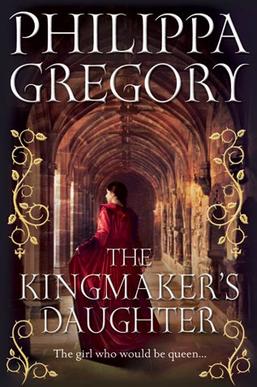
The Kingmaker's Daughter is a 2012 historical novel by English writer Philippa Gregory, part of her series The Cousins' War. It is the story of Anne Neville, wife of Richard III of England. The 2013 BBC One television series The White Queen is a 10-part adaptation of Gregory's novels The White Queen (2009), The Red Queen (2010) and The Kingmaker's Daughter, and features Faye Marsay as Anne Neville.

The White Princess is a 2013 historical novel by Philippa Gregory, part of her series The Cousins' War. It is the story of Elizabeth of York, daughter of Edward IV of England and Elizabeth Woodville, and later wife of Henry VII and mother of Henry VIII.
Michael Marcus Morgan, better known as Michael Marcus, is an English actor. He is best known for his portrayal of Henry Tudor in the TV series The White Queen (2013). He also had supporting roles in The Physician (2013) and The Theory of Everything (2014).

The White Princess is a historical drama television miniseries developed for Starz. It is based on Philippa Gregory's 2013 novel of the same name and, to a lesser extent, its 2014 sequel The King's Curse. It is a sequel to the 2013 miniseries The White Queen, which adapted three of Gregory's previous novels, and begins immediately where The White Queen finished.

Catherine of Aragon was Queen of England from June 1509 until May 1533 as the first wife of King Henry VIII. She has been portrayed in film, television, plays, novels, songs, poems, and other creative forms many times, and as a result, she has stayed very much in popular memory.
Thomas Cromwell was Chief Minister to King Henry VIII of England from 1534 to 1540. He played a prominent role in the important events of Henry's reign, including the king's divorce from Catherine of Aragon, the execution of Anne Boleyn, the marriage to Anne of Cleves, the Dissolution of the monasteries, and the English Reformation. These dramatic events have provided the inspiration for plays, novels and films from shortly after his death until modern times.